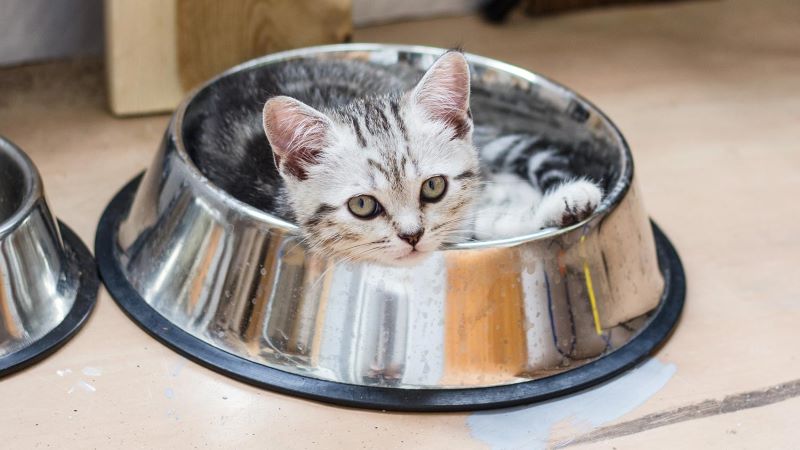Before we can talk about what you should be feeding your cat, we need to take a look at a cat’s digestive system and anatomical design.
A cat’s digestive system
Did you know that a cat’s stomach is the size of a ping-pong ball? Or that it can only hold 40 to 50 ml at a time? Did you know that, contrary to popular belief, a cat’s digestive system is designed to pass the hair they ingest from grooming, so hairballs are not “normal?” All of these things are worth noting as we get into a discussion on what to feed a cat who is dealing with a sensitive stomach.
Visit your veterinarian
First things first, pay a visit to your veterinarian, especially if your cat is vomiting food or hairballs once a month or more, or is losing weight. It is important to rule out any underlying illness before you attempt to get down to the root of your cat’s sensitive stomach. Once your vet has given your cat a clean bill of health, you can begin to narrow down the cause of his or her intestinal upset. Many GI disruptions are a result of diet, allergies, food additives, and flavorings. You can work together with your vet to find food that fits your cat’s nutritional requirements while also satisfying his or her palate.
Consider a diet trial
According to Dr. Elizabeth Bale, DVM, the best foods for a cat with a sensitive stomach are highly digestible and contain no irritating ingredients. Easier said than done, right? Luckily, pet food companies are aware of pets’ food sensitivities and have developed many options for felines with funny tummies. Start with a diet trial to narrow down your cat’s food options until you find a food that works. Just remember that it can take a few months for your cat to clear the old diet from his or her system so that you can completely evaluate the new diet. Below are three types of diets to try…
Try a hypoallergenic diet
It is important to pay attention to the type of protein in your cat’s food. According to Dr. Bales, the protein source is the component of cat food most likely to cause food allergies. Some studies show that beef, chicken, and fish are the biggest culprits. Hypoallergenic diets, which contain one protein source, are available in many forms, from non-prescription to prescription (guarantees no cross-contamination). Hydrolyzed diets take it one step further by breaking down the protein to a size that’s less likely to be recognized by your cat’s immune system.
Try changing the form of cat food
If your cat is currently eating dry food, try switching to wet food to see if the change may alleviate some of his GI discomforts. Many canned foods are high in protein and water and low in carbohydrates which more closely mimics a cat’s natural diet. If you do decide to transition your cat from a dry to wet food or vice versa, it is important to do so gradually. Changing food “cold turkey” can lead to more stomach upset. Over 7-10 days, transition your cat from his or her old diet to the new diet.
Switch up your feeding routine
Because cats are physiologically and anatomically designed to eat small, frequent meals, changing how much and how often you feed your cat may be beneficial. Whereas eating one large meal a day may lead to frequent regurgitation, several small meals will increase the amount of food that is digested and absorbed. Doc and Phoebe’s Indoor Hunting Cat Feeder Kit takes feeding to a new level by tapping into a cat’s instinct to hunt. The interactive feeders allow cats to hunt for small portions of food twice a day, as they would in the wild.
Be proactive about your cat's health!
And of course, the best defense is a good offense, so make sure you are doing everything you can to be proactive on the health care front. When you enroll your cat in pet health insurance, you can afford to provide the best veterinary care if you need help getting to the bottom of GI issues. Get a quote today!

